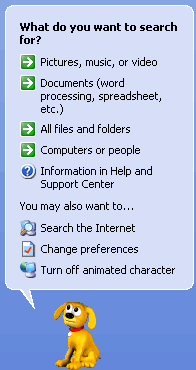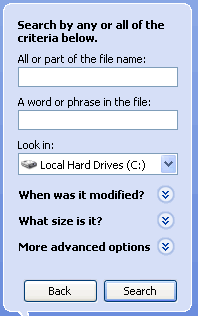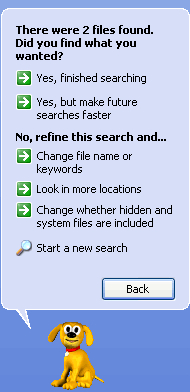Windows XP -
Searching for Files and Folders

Windows XP
Searching for Files and Folders


/en/windowsxp/using-the-recycle-bin/content/
When you have trouble finding a file or folder on your computer, search for it using Microsoft XP's Search Companion.
OR
OR

Depending on which option you choose, you're presented with various ways to conduct your search.
Let's say you choose to search  for a particular file. The Search Companion prompts you with questions to help you refine your search. It's helpful if you can remember something about the missing file, such as all or part of the file name, file type, when you last worked with the file, a word or phrase in the file, or what drive it's on. The more criteria contained in your search, the more refined the search becomes.
for a particular file. The Search Companion prompts you with questions to help you refine your search. It's helpful if you can remember something about the missing file, such as all or part of the file name, file type, when you last worked with the file, a word or phrase in the file, or what drive it's on. The more criteria contained in your search, the more refined the search becomes.


Finding a file can take seconds, minutes, or much longer depending on the type of search and where you look. If you don't find the file or folder you're looking for on the first try, type in a different name and/or location.
To quickly review files listed in your search results, hover your mouse pointer over the file name. A yellow pop-up window displays, telling you its location, the file type, and size. Double-click the file to open it.
You can preview image documents (including fax documents) using the Windows Picture and Fax Viewer without opening an image-editing program. This is especially useful when browsing through a list of nondescriptive file names. For example, let's say you have a file named 09786.jpeg. You may wonder what the file looks like.

/en/windowsxp/managing-user-accounts/content/